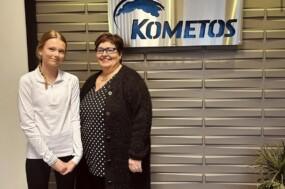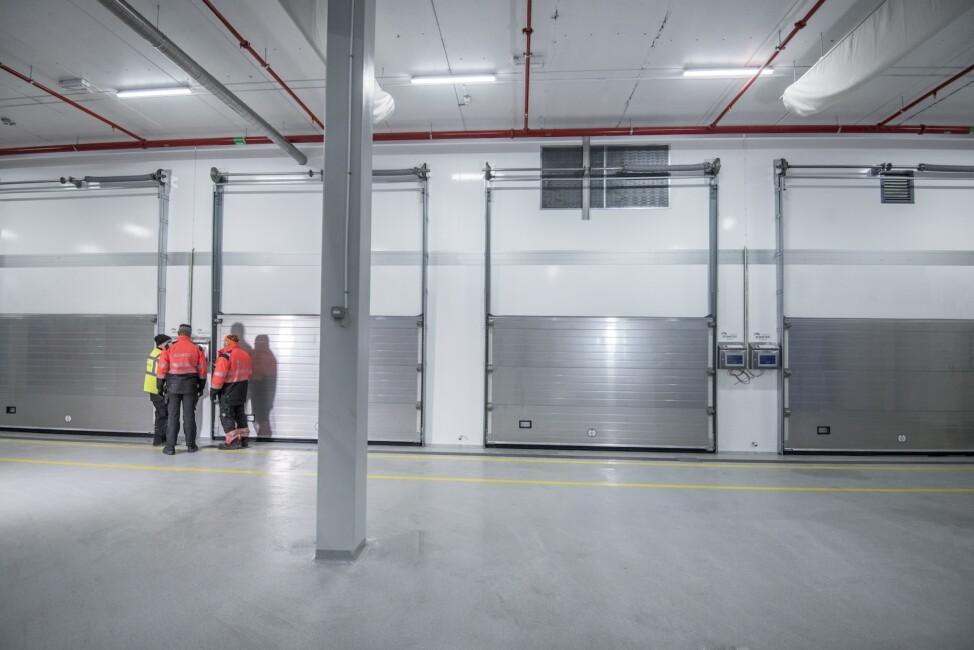
Key Methods for Industrial Defrosting of Meat Safely and Efficiently
Freezing meat is straightforward, but safely thawing it at industrial scale while keeping quality intact can quickly become complicated. Industrial defrosting demands consistent results, efficiency, and reliable food safety—especially when handling large batches. Slow or uneven thawing invites bacterial growth, compromises texture, and disrupts production timelines.
Although technologies like microwave, radio frequency, and immersion thawing offer viable solutions, air-flow-based thawing stands out as especially effective for large industrial volumes. With precisely controlled, alternating airflow, this approach ensures uniform thawing, minimal drip loss, and energy-efficient performance—essential for consistent product quality and regulatory compliance.
In this guide, we’ll explain how key industrial thawing technologies operate, focusing particularly on the advantages of air-flow-based systems. You’ll learn what factors matter most when choosing a thawing method and why optimized airflow management is increasingly becoming the preferred solution for food safety, efficiency, and quality preservation at scale.

Why Traditional Meat Defrosting Methods Fall Short (And What’s Next)
Industrial meat processing requires precise and efficient defrosting methods to maintain quality, hygiene, and productivity. While traditional thawing techniques have been widely used for decades, they often struggle to meet modern food safety standards and operational demands.
One of the most basic thawing methods involves placing frozen meat in ambient or refrigerated air and allowing it to defrost naturally over time. While this method requires minimal equipment, it is incredibly slow, often taking several hours or even days depending on the size and thickness of the meat.
The biggest challenge with air thawing is temperature control—external layers thaw more quickly while the inner portions remain frozen, creating a breeding ground for bacteria. Furthermore, prolonged exposure to air can lead to excessive moisture loss, which affects both the texture and weight of the meat.
Another widely used method is water thawing, where frozen meat is submerged in cold or lukewarm water to speed up heat transfer. This technique is significantly faster than air thawing, but it presents its own challenges.
The risk of cross-contamination is high if the water is not frequently changed and properly sanitized. Additionally, water thawing requires a substantial volume of water, making it an unsustainable option in areas with strict conservation regulations. While water immersion can be effective for small batches, it is not ideal for large-scale meat processing due to its inconsistent thawing results and potential safety concerns.
To address these challenges, the meat processing industry is shifting toward faster, safer, and more resource-efficient defrosting technologies.
- Transitioning to Modern Defrosting Technologies for Speed and Precision: Advanced methods like microwave, steam-vacuum, radio frequency (RF), and airflow process significantly reduce thawing times while maintaining meat quality. By using controlled heat distribution, these techniques eliminate inconsistent thawing and bacterial risks common in traditional methods.
- Integration with Automated Food Processing Systems: Automated defrosting systems seamlessly connect to food processing lines, reducing manual handling and ensuring uniform thawing across large batches. This improves consistency, minimizes labor costs, and enhances food safety by limiting human intervention.
- Focusing on Energy Efficiency and Sustainability: Modern thawing technologies reduce energy and water use, meeting EU sustainability regulations. Airflow-based systems cut energy and water usage, ensuring compliance with the EU Water Framework Directive. Advanced thawing methods also support HACCP, the EU Food Hygiene Package, and Regulation (EC) No 852/2004, enhancing food safety and operational efficiency.
These modern solutions not only improve food safety but also optimize operational efficiency.
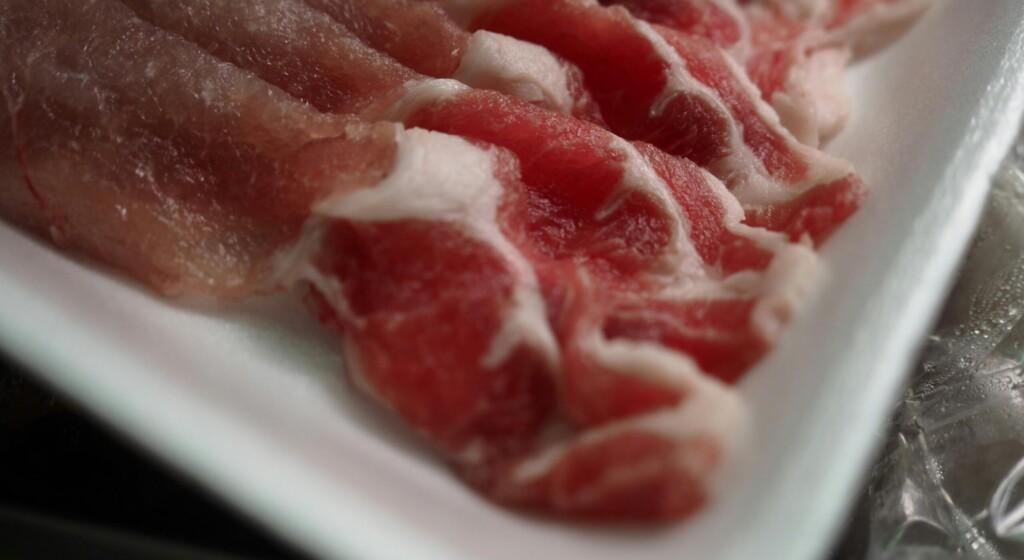
Defrosting Method #1: Microwave Defrosting
Microwave defrosting utilizes electromagnetic waves to generate heat within frozen meat products. These microwaves penetrate the meat, causing water molecules to vibrate and produce internal heat, effectively thawing the product from the inside out. This method can be configured for both batch and continuous processing, offering flexibility to meet various production demands.
Advantages:
- Rapid Thawing: Microwave defrosting significantly reduces thawing times compared to traditional air or water methods, enhancing production efficiency.
- Uniformity: This technique promotes even thawing, minimizing the risk of frozen cores and ensuring consistent product quality.
- Reduced Drip Loss: By preserving the meat’s texture and minimizing weight loss, microwave defrosting helps maintain product integrity.
- Energy Efficiency: Microwave systems often consume less energy than prolonged refrigeration-based thawing, contributing to cost savings and sustainability goals.
Considerations:
- Initial Investment: Implementing industrial microwave defrosting requires specialized equipment, which can entail a substantial upfront cost.
- Process Control: Precise control is essential to prevent partial cooking of the meat, which could adversely affect quality.
- Product Suitability: Microwave defrosting is most effective for portion-sized cuts and may not be ideal for large bulk frozen blocks.
Overall, microwave defrosting presents a viable solution for processors seeking rapid and uniform thawing, particularly for smaller meat portions. However, careful consideration of equipment investment and process management is crucial to fully leverage its benefits.
Defrosting Method #2: Steam-Vacuum (ColdSteam) Defrosting
Steam-vacuum defrosting, also known as ColdSteam technology, employs steam under vacuum conditions to expedite the thawing process. By reducing the atmospheric pressure within a sealed chamber, the boiling point of water decreases, allowing steam to condense on the frozen meat at lower temperatures. This method ensures gentle and uniform heat transfer without cooking the product’s surface.
Benefits:
- Accelerated Thawing: Steam-vacuum defrosting significantly shortens defrosting times compared to ambient air or water methods, enhancing operational efficiency.
- Product Quality Preservation: The gentle heat transfer maintains the meat’s texture and juiciness, preventing surface overcooking and excessive moisture loss.
- Enhanced Food Safety: The vacuum environment inhibits bacterial growth, reducing the risk of contamination during the defrosting process.
- Energy Efficiency: Utilizing steam under vacuum conditions can be more energy-efficient than traditional thawing methods, aligning with sustainability objectives.
Challenges:
- Specialized Equipment: This method requires sophisticated machinery capable of maintaining vacuum conditions and precise steam control, leading to higher initial and maintenance costs.
- Process Control: Accurate calibration is essential to ensure uniform heating and prevent uneven thawing. Additionally, incorporating a carefully managed airflow process after initial steam condensation is crucial to distributing residual heat evenly, avoiding temperature inconsistencies.
- Product Compatibility: Steam-vacuum defrosting is particularly effective for bulk cuts but may not be suitable for individually packaged items or delicate products.
In summary, steam-vacuum defrosting offers a rapid and efficient thawing solution that preserves product quality and enhances food safety. When combined with a controlled airflow process, this method ensures uniform thawing results and superior product handling. However, the need for specialized equipment and careful process management should be considered when implementing this technology.
Defrosting Method #3: Radio Frequency (RF) Defrosting
Radio Frequency (RF) defrosting is an advanced method that uses electromagnetic waves at lower frequencies than microwaves to generate heat inside frozen meat. By stimulating polar molecules within the product, RF waves create uniform internal heating, ensuring even thawing from the inside out. This method is especially effective for bulk frozen products, such as large meat cuts and blocks, making it a valuable solution for high-volume meat processing.
RF defrosting offers several advantages over conventional thawing methods, making it a preferred choice for large-scale food processing facilities:
- Faster Thawing Time: RF defrosting greatly reduces thawing times compared to air or water methods, significantly improving production efficiency.
- Even Heat Distribution: This method ensures consistent temperature throughout the meat, eliminating frozen cores and reducing the risk of overheating outer layers.
- Ideal for Large Meat Blocks: RF technology is well-suited for bulk processing, making it an effective choice for manufacturers handling large quantities of frozen products.
- Minimizes Drip Loss: By preserving texture and moisture, RF defrosting helps maintain the quality and weight of the meat.
Despite its advantages, RF defrosting has some challenges that processors should consider before implementing this technology:
- High Initial Investment: The cost of RF defrosting equipment is substantial, requiring a significant upfront investment compared to traditional methods.
- Variable Energy Consumption: While RF thawing is energy-efficient in optimized settings, efficiency depends on factors such as batch size and system calibration, which can lead to fluctuations in energy use.
- Limited Flexibility for Smaller Cuts: RF defrosting works best for large, uniform meat blocks, making it less effective for portion-sized cuts or mixed product sizes. To mitigate this limitation and enhance consistency, integrating a carefully controlled airflow process after the initial RF thawing phase can help equalize product temperatures and manage moisture accumulation.
RF defrosting is a fast, precise, and reliable thawing method for large-scale meat processing, ensuring uniform heating and high product quality. When paired with a subsequent airflow process, RF thawing can achieve optimal product consistency and superior handling efficiency, although the high initial investment and energy considerations make it best suited for high-volume industrial applications rather than smaller-scale operations.
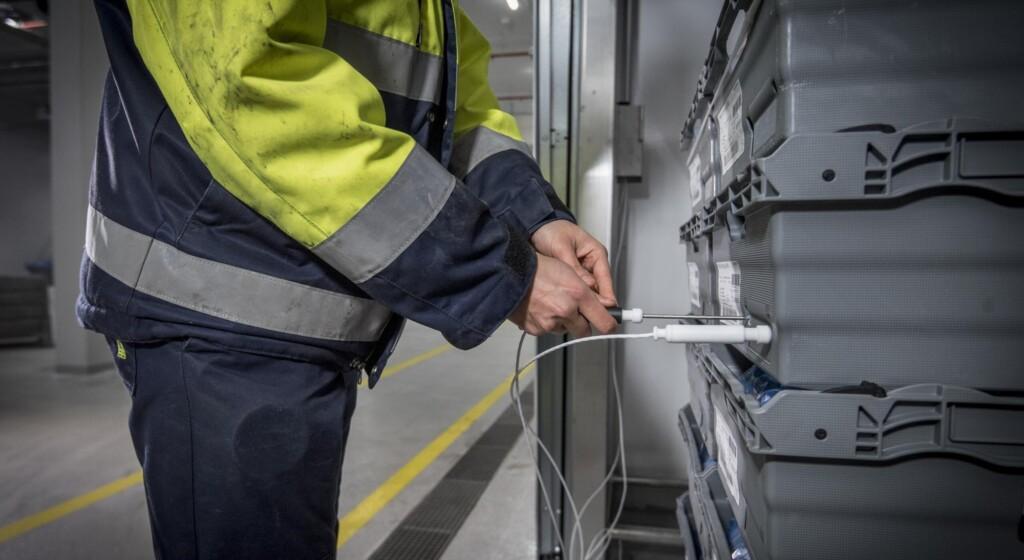
Defrosting Method #4: Airflow-Based Thawing
Airflow-based thawing technology takes meat defrosting to the next level by gently circulating warm air evenly around every piece, ensuring no icy cores or hot spots. Operators can tweak the airflow’s direction, temperature, and intensity through user-friendly automated PLC systems—keeping an eye on thawing remotely, even from the comfort of their desks.
Able to smoothly manage batches as big as 25,000 kg, advanced airflow-based thawing systems speed up thawing dramatically, typically finishing within 8–12 hours and boosting output.
Key benefits of airflow-based thawing:
- Lightning-Fast Thawing: Cuts thawing time dramatically compared to traditional methods, letting you process more products daily.
- Consistent Quality: Say goodbye to frozen cores and uneven textures; the meat thaws evenly, preserving freshness and moisture.
- Energy Smart: Carefully designed EC fans and precision compressors reduce power usage, trimming your energy bills.
- Top-notch Hygiene: Meets strict EU hygiene regulations, including HACCP, by eliminating temperature variations and contamination risks.
What to keep in mind:
- Requires upfront investment in specialized airflow equipment.
- Staff will need initial training to master PLC automation.
- Primarily suits high-capacity operations rather than smaller, mixed-batch facilities.
Implementing airflow-based thawing, such as the controlled thawing solutions offered by Kometos Finncold, takes some initial investment and training your team to manage this smart setup, but once it’s up and running—think consistent results, energy savings, and superior product quality—a pretty good trade-off for the initial effort!
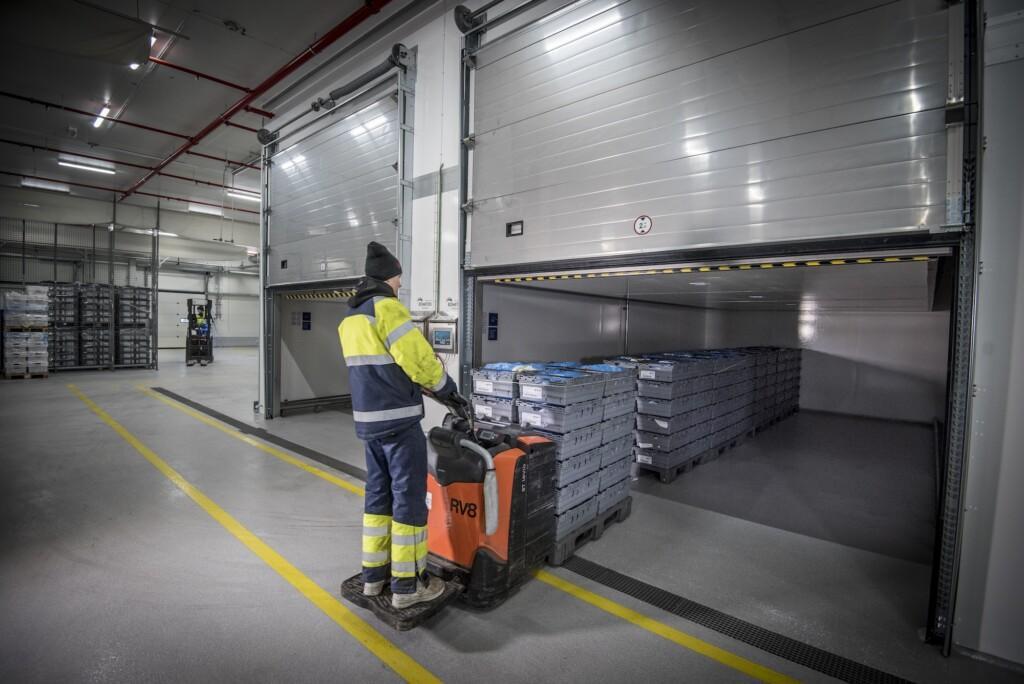
Key Takeaways
- Traditional thawing methods often result in uneven thawing, bacterial risks, and inefficiencies, making them unsuitable for large-scale meat processing.
- Airflow-based thawing technology ensures rapid, uniform thawing by using precisely controlled, alternating airflow, significantly improving meat quality and operational throughput.
- Kometos Finncold systems utilize advanced airflow technology with spindle-motor-controlled airflow guides and EC fans, ensuring even temperatures, minimal drip loss, and consistently high product quality.
- Precise PLC automation and remote monitoring offered by Kometos Finncold enable flexible operation, allowing businesses to adjust thawing conditions in real-time, maximizing efficiency.
- Energy-efficient designs reduce operational costs and align with EU sustainability and hygiene standards, including HACCP and environmental compliance.
- Integrating airflow-based thawing, ensures reliable thawing outcomes, optimized productivity, and seamless integration into existing industrial workflows.
For food processors and cold storage providers needing a scalable, energy-efficient, and fully controlled thawing solution, Kometos Finncold stands out as the only controlled thawing method on the market. At the core of this controlled thawing solution is an advanced airflow process, designed to ensure even heat distribution and uniform thawing across all product layers.
Unlike conventional approaches, it maintains a consistent temperature range (-20°C to +2°C), ensuring uniform thawing while minimizing product weight loss. With precise airflow processes as the technical foundation, the Kometos Finncold thawing system optimizes thawing performance and enhances food safety.
To learn more about how Kometos thawing system can enhance your production efficiency, food safety compliance, and energy savings, visit Kometos solutions for detailed system specifications and customization options.
FAQ
What are the 4 proper methods for thawing meat?
The four proper methods for thawing meat are refrigeration thawing, cold water immersion, microwave thawing, and industrial airflow-based thawing systems. Industrial methods use precise temperature control and airflow management to ensure uniform thawing while preserving product quality and food safety.
What is the difference between thawing and defrosting?
Thawing refers to the process of bringing frozen meat to a safe temperature for processing or consumption. Defrosting simply removes ice buildup but does not necessarily mean the product is ready for use. Industrial thawing methods ensure even temperature distribution and food safety compliance.
How do you defrost processed meat?
Processed meat should be defrosted under controlled conditions to prevent bacterial growth. Methods include refrigeration thawing, cold water immersion, or controlled industrial thawing systems, which use precise temperature settings (-20°C to +2°C) and air circulation technology for uniform results.
How long is meat good after defrosting?
Once thawed, raw meat is safe for 1-5 days in refrigeration, depending on the type: poultry (1-2 days), ground meat (1-2 days), and whole cuts (3-5 days). Processed meats may have shorter shelf lives due to moisture loss.
Can bacteria grow on vacuum-sealed meat?
Yes, bacteria can grow on vacuum-sealed meat, especially anaerobic bacteria, which thrive in oxygen-free environments. Proper thawing at safe temperatures (0-4°C) and strict hygiene control are essential to prevent bacterial contamination and ensure food safety.



